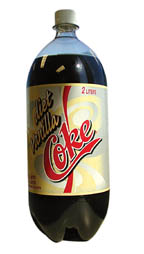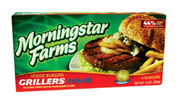

Non-enzymatic caramel color is the brown product created by either the Maillard or caramelization reactions. The Maillard reaction occurs between reducing sugars and amines under various time, pH, heat or pressure conditions. The reaction naturally produces the brown color of roasted and grilled meat, chocolate, soy sauce, coffee and bread.
Caramel colors also are created through thermal decomposition or the caramelization reaction, which occurs in the absence of amines when sugars are heated above 150°C. In the polymerization reaction of caramelization, sugars recombine to form large complex color structures.
The challenges of adding caramel coloring to formulated products are complicated. The ingredient's solubility is reliant on pH and requires knowledge of the intended product's isoelectric point and pH. In liquid beverages, precipitation of caramel or flavor solids can occur if care is not taken to understand the food's chemistry and its interaction with caramel. Depending on the reactants used in the manufacturing of the caramel, four classes of caramel colors are possible, and each class is compatible with different food types.
Class I caramels (or “plain” caramels) do not contain ammonium or sulfite compounds. Like caramels in Classes II and IV, plain caramels have a negative colloidal charge, which makes some of them suitable for use in high-proof alcohol below 75% concentration.
Class II caramels, or those processed with caustic sulphite, have limited food and beverage applications. Alternatively, high-intensity color Class III caramels are created by processing sugars with only ammonia. Some Class III caramels are stable at pH 3, soluble at 20% salt solution, and used to color soups, sauces, beer, malt liquor, canned foods, biscuits, and pastries. Class III or IV caramels are highly dispersible in water and dough, making them well suited for bakery applications.
Class IV caramel colors processed with both sulfur and ammonia to achieve intense color are used in cola beverages and other soft drinks. Caramels used in soft drinks have a negative charge, with an isoelectric point below the pH of the beverage to avoid flocculation/precipitation. (Soft drinks generally have a pH range of 2.5-3.5.)
“Caramel colors are always being used in new ways; for example, as a substitute for cocoa. Since cocoa prices are very high, [to reduce ingredient expenses, manufacturers] use some caramel color in addition to the cocoa and likewise for cinnamon and coffee,” says David Tuescher, technical director of research and development of new materials at a leading caramel color supplier. In cookies, very pleasing dark shades can be achieved by combining caramel color and alkali-processed cocoa.
In addition to its ornamental qualities, caramel color can protect flavors and other ingredients in beverages from deterioration by light, and also acts as an emulsifying agent. It helps reduce the need for gums when diluting soft drink concentrates and flavoring agents.
Although caramel color is sold as a colorant, it does contribute aromas and flavors that add to the sensory qualities of the final product. Tuescher asserts that flavor is very significant to caramel color, which contributes a subtle yet significant “texture” and flavor to a drink. “We sell it as a color,” explains Tuescher, “but there is a flavor constituent. You have to pay attention to flavor when you are developing a product. It could have a positive or negative influence.” By changing from one type of caramel color to another, formulators sometimes can eliminate negative consequences or add others. As an example, Tuescher points to a colorless cola product released years ago that never grew in popularity. The product had a different mouthfeel, due to the loss of viscosity associated with caramel color.
Melanoids, brown pigments and flavor-active compounds formed during the Maillard reaction, contribute off-flavors recognized as bitter or burnt, as well as off-aromas (often described by flavor chemists as burnt, onion, rancid, sweaty or cabbage). On the other hand, the oxygen-accepting Maillard products, melanoid reductones, act as antioxidants and can improve shelflife.
Depending upon the application, melanoidins also contribute appetizing flavors, sensed as “malty,” bread crust-like, caramel, coffee or roasted, and alluring aromas perceived as “bready,” cracker, fine malt.
As ingredient suppliers introduce new Class I caramel colors for use in high salt-soluble products, the realm of applications for caramel color is widening. For example, formulated soy sauce is the most germane recipient. Manufacturers have encountered difficulties retaining a clear product when coloring soy sauce not produced naturally by the slow fermentation process. Caramel color is added to the accelerated soy sauce, but unless it is stable at 20% salt solution, the sauce will be hazy and the caramel will precipitate out. “We have clarity at 20-25% concentration of salt with our particular [caramel] product,” says Tuescher. He adds that this new Class I colorant will allow soy manufacturers to achieve the specific color characteristics they need while maintaining a clear, haze-less product.
Sidebar:
Going Global
Caramel color industry regulations on GMO products in European and Asian countries have caused concern for U.S. caramel color manufacturers. The carbohydrates used in the caramelization process often originate from GMO corn. “GMO should not be an issue for caramel color but, based on current European regulations, it still is an issue,” says Tuescher. However, he argues, all of the corn's protein, which would contain the GM components, is removed before the caramelization process. Additionally, when the carbohydrate was tested at Tuescher's company, using the most sensitive level of PCR analysis, less than 10ppb of maize protein was found.On February 23, 2004, after a series of tests lasting more than 250 days, the Chinese government agreed to allow entry of GMO-altered crops sold by U.S. crop giant Monsanto. Under the new rules, some but not all of Monsanto's soybeans, cotton and corn products will be available for use in China. “I really doubt that the Chinese action will cause any quick change in the [GMO rules set by the E.U.]. The E.U. situation is not based on science, but on politics driven by the anti-GMO groups,” speculates Tuescher.
“It is not cost effective to have two separate lines, one to make products for Europe and one for the U.S.,” continues Tuescher. “The acceptance of GMO products by China is simply the first step. The lower cost of GMO materials will eventually make them acceptable [in the E.U. also].”
A melon-flavored soft drink by Asahi in Japan contains caramel color, but is bright green. Caramel color commonly is used in many beverages, from the piping hot coffee of Maxim's (Japan) microwaveable café latte by Ajinomoto General Foods to Grupo Aguila Azteca's (Mexico) high-energy drink Red Rhino to Lo-Zano's (Guatemala) apple juice.
Sidebar 2:
Matchmaking: Caramel Compatibility Tests
There is more to caramel color than color. Besides testing color strength and hue with a spectrophotometer, manufacturers need to ascertain many additional properties of their caramel color supply (some are listed below) to assure that flocculation does not occur and that the color intensity will last the life of the product.
- Haze point
- Gel point
- Shelflife or resinification
- Isoelectric point and pH
- Alcohol concentration
- Colloidal charge